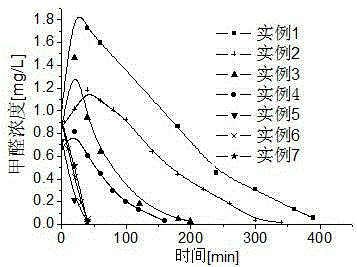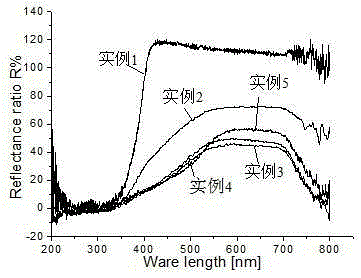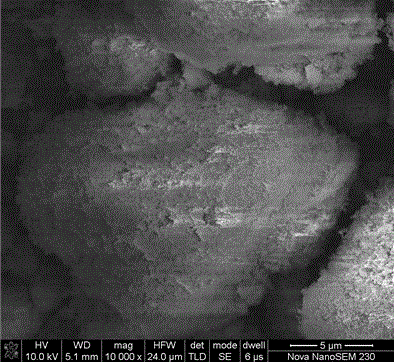A photocatalyst of vanadium pentoxide composite titanium dioxide for the degradation of formaldehyde
A photocatalyst and photocatalysis technology, applied in the field of photocatalysis, can solve the problems of low efficiency of photogenerated carriers, many raw materials, and low utilization rate.
- Summary
- Abstract
- Description
- Claims
- Application Information
AI Technical Summary
Problems solved by technology
Method used
Image
Examples
Embodiment 1
[0023] ν of Example 1 1 4.3×10 -3 mg / L / min, the ν of Example 2 2 3.8×10 -3 mg / L / min, ν of Example 3 3 4.5×10 -3 mg / L / min, ν of Example 4 4 6.8×10 -3 mg / L / min, so: ν 4 > ν3 > ν 2 > ν 1 , and in Examples 5 to 7, the photodegradation of formaldehyde becomes the main reason for the reduction of formaldehyde concentration before the temperature is stabilized (about 30 minutes), so the calculated rate does not match the actual situation, but by figure 1 It can be seen that the effects of these three examples on degrading formaldehyde are similar.
[0024] In the photocatalytic process, compounded V 2 o 5 The degradation rate of the P25 photocatalyst is larger than that of the uncomposited one. at V 2 o 5 / TiO 2 When the compounding ratio is very small, along with the increase of the compounding ratio, the degradation rate increases, and when the compounding ratio reaches 0.12 of embodiment 5, the degradation reaches the maximum, and the compounding reaches the best ef...
PUM
| Property | Measurement | Unit |
|---|---|---|
| band gap | aaaaa | aaaaa |
Abstract
Description
Claims
Application Information
 Login to View More
Login to View More - R&D
- Intellectual Property
- Life Sciences
- Materials
- Tech Scout
- Unparalleled Data Quality
- Higher Quality Content
- 60% Fewer Hallucinations
Browse by: Latest US Patents, China's latest patents, Technical Efficacy Thesaurus, Application Domain, Technology Topic, Popular Technical Reports.
© 2025 PatSnap. All rights reserved.Legal|Privacy policy|Modern Slavery Act Transparency Statement|Sitemap|About US| Contact US: help@patsnap.com



